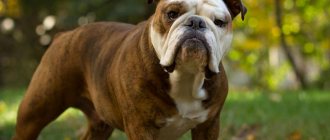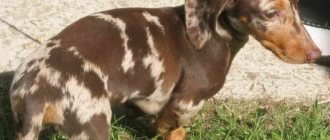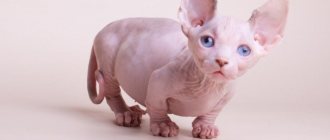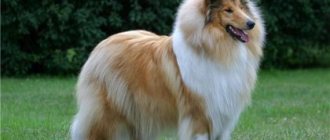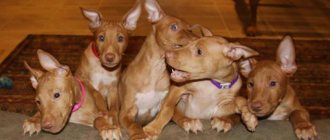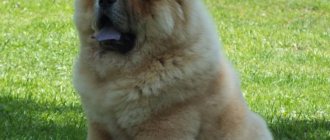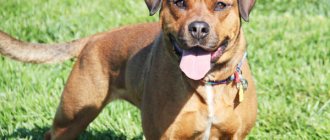Scots are a relatively new breed. These cats are notable not only for their cute faces and curled ears, but also for their variety of colors. The breed standard specifies more than 200 colors and their combinations, with some shades considered very rare. If, for example, a fold-eared cat in a tortoiseshell color will no longer surprise anyone, then the lilac range with marble stains is a completely unique achievement of breeders and breeders.
Origin of the breed
The first mentions of Scottish fold cats were at the beginning of the 19th century in China. On the European continent they became known thanks to a farmer and his wife who lived in Scotland. The beginning of the breed was the ordinary cat Susie, born from ordinary street cats. She had short white fur and small forward-curved ears. The farmer's wife was breeding cats and drew attention to her. In 1961, the matured Susie gave birth to a kitten with the same curled ears. They named him Snooks. He became the founder of the Scottish Fold cat breed, both marbled and other colors.
The Rosses wanted to obtain official permission to breed these cats, but when they turned to geneticists for a breeding program, they did not receive it. Genetics pointed to the reason for the refusal - the birth of a large number of deaf kittens and the difficulties of treatment when infected with ticks.
Other breeds of blue screen star cats
“British” and “Scots” are far from the only TV stars.
For example, the face of the advertising campaign for Gourmet Gold food is a white Persian cat, and Sheba is represented by an elegant Russian blue cat. But to become a screen star, you don’t have to belong to any particular breed. The well-known cat Boris from the Kitiket advertisement is a mongrel, just like the ginger cat from the Friskies commercials. Advertising is one of the most important aspects of the success of any brand. But sometimes it brings not only fame to the company, but also an advertising hero. A striking example of this is the Whiskas advertising campaign, which popularized British and Scottish Shorthair kittens. Everyone dreams of having such a pet. The main thing is to accurately determine the breed and color.
Mating rules
Not everything was simple with the genes of this cat. There is a so-called folding gene. During the period of intrauterine development, the kitten developed serious abnormalities associated with the skeletal system: fusion of the vertebrae, as well as curvature of the limbs. Such changes occurred when mating a cat and a cat with hanging ears.
In this regard, geneticists have developed mating rules that determine the crossing of fold-eared cats with cats with straight ears, and vice versa. Nature has made sure that kittens are born in the litter with the hereditary characteristics of one and the other parent regarding the ears. The coat color of a kitten may differ from the coat color of its parents. For example, a marbled Scottish Fold kitten (pictured below) could have been born to parents of the same color.
Character of the Lilac Scotsman
Tortoiseshell and marbled Scottish Fold kittens are no different from their counterparts from other color groups. They are good-natured and affectionate, love company and do not seek solitude, get along well with other pets and get along well with children.
The lilac color combined with the marbled tabby pattern of the fold-eared breed is still considered rare and difficult to breed. It is suppressed by all upstream dominant genes and therefore a small number of breeders specialize in lilac cats. But at exhibitions, these pets are never left without attention, and Scottish kittens that meet all standard requirements do not wait long for their new owners. With correct breeding and proper care (feeding), cats live up to 15 years, which means they can bring people the joy of communication for a long time.
Scottish fold and Scottish straight
The official name of the breed of kittens with hanging ears is Scottish Fold, and with straight ears - Scottish Straight (from English straght means “straight”). The Scottish Fold was originally called Lops, after the "loop-eared rabbit" with its ears hanging down to the side of its head. The breed began to be called the Scottish Fold after registration by the felinological organization GCCF (Great Britain).
It is impossible to determine what species a newborn kitten may belong to. The ears begin to droop three weeks after birth. Originally, cats only had a single fold in their ears, but due to selective breeding, breeders have increased this to a double or triple fold, which causes the ear to lie completely against the head.
Both kittens are purebred. But only fold-eared dogs are considered to be show dogs - the Scottish Fold. However, without crossing with Scottish Straight cats there will be no continuation of the breed. They are carriers of the fold-eared gene and irreplaceable successors of the genus of the Scottish Fold with a marbled color. In the photo above there is a litter of kittens with straight and drooping ears from a female Scottish Straight and a male Scottish Fold.
Types of colors
Scottish Fold or Scottish Fold, a small animal weighing about 6 kg. The main feature is the presence of small ears, tilted forward and covering the auricles. Another characteristic feature is large, widely spaced eyes, very expressive. These cats meow strangely and creakingly. The breed was bred in the 60s of the last century.
To read: Several types of husky and breeds that are similar in appearance
Scottishfolds are characterized by both short plush and semi-long coats. Kittens will be born with straight ears. After a certain time, some kittens' ears become bent. The rest fall into the Scottish Strike category. The Scots have a strong, rounded torso. Short neck. The legs are of medium length, the tail is above average length. The colors of the eyes are very diverse - yellow, green, blue, brown, orange, gold. The nose is short and wide, with large whisker pads. There is a significant variety of colors of this breed.
White
All Scottish Folds are descended from white cats. They can have almost any coloring of their eyes, they even have different eyes - one eye is dark orange, the other is light blue. In white kittens up to one and a half years old, blue or black fur is acceptable on the head; after molting, it disappears.
White kittens are sometimes born deaf. When purchasing, it is worth checking by clapping your hands.
Cream
Very elegant color with a faint peach touch. Small leopard spots sometimes appear during molting. Eye coloring is dark orange or orange.
Black
In black Scots, no light inclusions are allowed. Only concentrated and deep color. Eye color is dark orange.
A cat's eyes are larger in relation to body size than those of most mammals.
Cinnamon color
The coloring is rare, so kittens are expensive. Various color gradations are allowed. The paw pads are brown and pink, the nose lobe is the same.
Brown (chocolate)
Any gradation of brown tones is allowed. Residual patterns after molting are not recognized. This color is considered unique. The nose and paw pads are light brown.
Lilac
The fur is beige. The eyes should be dark orange or orange in color.
Cats can see up to 60 meters away. Field of view is about 185, peripheral up to 285 degrees.
Red color
The uniqueness of the color of the animal depends on the color scheme and the clarity of the shades. In red Scottishfolds, the base of the hairs is light and gradually darkens towards the end. The tip is red.
Blue
Scottishfold blue has a wide variety of shades. From the lightest to the darkest, from light blue to blue. A solid color is required.
Bicolor
The coloring of bicolor cats allows two colors, one of which is white in combination with any other. The color distribution is approximately 30/70%. The classic bicolor, which is most valued, has the ideal of white paws, chest, neck and chin, and part of the muzzle. There is a kind of open necklace on the chest and neck. A small white triangle with a point on the forehead. The most common and beautiful bicolors are CREAM, BLUE and BLACK.
Point or Whiskas
A distinctive feature of this color is the light fur, like a background. She has darker shades in certain areas of her body. On the paws, ears, muzzle and tail area. The main thing here is the contrast of colors; extraneous patterns are not allowed, in particular on the stomach. The kittens are born light, but as they grow older the color becomes more pronounced. Only after a long period of time, up to 2 years, is the final coloration of the cat established.
To read: Recommendations for caring for a Persian cat, cost of a kitten
Lilac (lilac)
Color code c33. The color of the body is slightly different from light, there is a slight purple coating, the spots of markings are gray with pink, dark but warm in tone. Bright blue eye color. The paw pads and nose pads are pink and gray.
The surface pattern of a cat's nose is unique, just like a person's fingerprints.
Blue
The standard color of this cat is “Siamese”, since Siamese cats have this coloring. Color code a33.
Cream
Color code e33. Light body, almost white. A color deposit under baked milk is allowed. The markings are cream, the eyes are light blue or dark blue. A small surviving drawing may be visible. Paw pads and nose pads are beige. If they are not very contrasting, then the eyes should simply shine.
A kitten's eye color may change over time.
Cream blue
The difference lies in the background fur. These are different variations of baked milk.
Chok-lit (chocolate)
Color code b33. Chocolate colored spots on the body. The body is beige.
Red
Color code d33. Unusual red color with warm tint marks. The body is white with a slight touch of gold or a faint orange, reddish tint. The paw and nose pads are pink and beige.
Strength
Dark brown patches of markings on a light cream body. The pads on the paws and nose are chocolate.
Torti
The main thing in coloring is that the markings of the spots repeat one of the main colors, spots of red or cream color.
- SIL CAKE (f33)
- BLUE CREAM CAKE (g33)
- CHAKLI CAKE (h33)
- LILAC CAKE (j33)
- CINNAMON CAKE (q33)
- FAUN CAKE (r33)
Tortoiseshells
Due to genetic characteristics, tortoiseshell colors are found exclusively in cats. This color is a combination of finely spotted coloring in equally distributed colors of red and black cells. The color should look proportional. The colors of the two cells should be evenly distributed. Brindle spots are prohibited. Eye color is dark orange or gold. Paw pads and nose pads are black, pink or black and pink. Recognized tortoiseshell colors include:
- BLACK-RED (SFSf)
- CHOCOLATE RED (SFSh)
- BLUE-CREAM (SFSg)
- LILOW-CREAM (SFSj)
- CINNAMON-RED (SFSq)
- FAUN-CREAM (SFSr)
Also, depending on the haze, a second letter is added - s.
- TORBILE - tortoiseshell tabby (tiger color). This is f22,23,24. Spot, stripe or marble.
- TORTI – tortoiseshell color point.
Black (ns)
A rare, special color, so it is in demand. The essence of color: white undercoat. When the cat moves, a light color appears. That's very beautiful. As a rule, the hairs on the sides are lighter and slightly silvery. There should be no extraneous inclusions or drawings. The paw pads and nose pads are black. Dark orange or orange eye color.
Chocolate
Compared to the classic brown color scheme, the color here looks lighter. “Silver” appears on the sides and on the ears. The paw pads and nose are chestnut.
To read: Recommendations for Maine Coon nutrition and the number of feedings per day
Blue smoke
Very strict requirements for this color. All shades of blue are allowed. The undercoat is white, no residual patterns.
Tabby
This is the most contrasting and brightest color of the Scottishfold. The color of the coat can be varied, and the pattern is only spotted, brindle or marbled. There is also a ticked color - similar in appearance to a single color, but striped hairs appear on the back, and in the forehead area there is a characteristic “M”.
Spotted
The letter “M” in the forehead area, a necklace, circular stripes on the paws and tail, spots on the belly. The stripes are not continuous, but torn throughout the entire body area. Leopard coloring book.
Striped
It looks like a spotted one, but the stripes are clear, not broken, and contrasting. If the stripes widen or are interrupted with age, the color is no longer considered brindle. Eye color – orange, dark orange, green.
Marble
Two lines stretch longitudinally from head to tail. There are closed circles on the sides. Spots similar in description to butterflies on the back of the head. The letter “M” in the forehead area, rings in the form of closed lines-stripes on the neck. The merle color is present in kittens from birth.
Particolor (calico)
Unique coloring - tortoiseshell coloring on a light background.
Shaded (shaded)
An individual color feature is a white undercoat. The upper part of the hair is shaded with a dark color. Light color exclusively on the belly and sides. There should be no surviving drawings. Possible rings on the paws and the letter “M” in the forehead area. The main shaded colors are silver, gold and red.
Wang
This is a rather rare color. The main color of the fur is white. There are spots on the face and tail. Uneven stains and multiple stains on the body are acceptable.
Harlequin
Among the Scots this color is considered rare. The main white color has large spots, the tail is colored.
Characteristic features of the breed
Continuing to work on the Scottish Fold cat breed, geneticists were able to determine the best body parameters that exclude thickening of the caudal vertebrae. Those individuals were selected for breeding that had thin and long tails, and this contributed to the elongation of the body.
Scottish Fold cats have a medium body size. Males gain weight 4–6 kg, females are lighter, their weight ranges from 2.7 to 4 kg. The cat's body is rounded with a strong skeleton and soft fur. Paws of medium height. The cat, a merle-colored Scottish Fold, has a cute round face on a short neck. The eyes are large, round and widely spaced, which is very reminiscent of the eyes of an owlet. They come in a variety of colors, some blue, but the most common are copper shades. The nose is short and gently curved.
This breed has a sociable nature, so it is not at all surprising that the Scottish Fold breed is the 17th most popular breed in the Cat Fanciers Association's registry.
Difficulties of breeding
The tabby color is formed by the dominant T gene, which produces the signs of a brindle pattern: necklaces on the neck, stripes along the body, rings on the tail, and others. Next, the T gene transforms and transforms the variety of patterns on the animal’s body.
Lilac marble is considered the rarest and most difficult to breed.
It is believed that the TbTb gene is responsible for the merle color in Scottish cats, but the main difficulty is that this gene is absolutely recessive, which is why it is capricious in breeding. The difficulty lies in selecting a pair for mating, the individuals in which would contain this recessive gene.
IMPORTANT: the mating must involve one fold and one straight. Mixing two fold-eared Scots can be fraught with congenital hearing impairment.
Color
Scottish Fold cats can have any coat color. There are more than 350 variations. Among them, the main ones are: chocolate, black, purple and blue. Next comes the drawing: tiger, spot and marble. And these are only 24 main options. Minor colors include: white, silver, color-point, smoky, gold, each with its own variations, such as ticked or striped, shaded and others, officially recorded.
Taking into account the above, the Scottish Fold merle cat can have the color black merle, blue merle, chocolate merle, lilac merle, as well as all sorts of variations of merle with patterns.
There is a long-haired Scottish Fold breed. Depending on the registry, it is called Highland Fold, Scottish Fold Longhair, or Cupari. Long hair and thick fur is formed exclusively around the upper thighs, toes, tail and ears.
Features of care
Scottish Fold cats can be either short-haired or long-haired. Therefore, the most important thing in care is to take care of your pet’s coat. It is necessary, using a furminator, to remove fallen hairs from the thick plush undercoat, and also with its help to remove the resulting tangles. Long-haired cat breeds are recommended to be brushed every week. It is not customary to trim Scottish Folds.
Scottish fold marbled cats are not afraid of water. They can wet their paws in the container themselves, but this does not mean that they need to be bathed often. Cats are quite clean and take care of their fur by licking it. If there is a need to bathe your pet, you need to use a special shampoo so as not to cause allergies. Many cats love to swim if they have lived since childhood where there is a pool or natural pond.
Since cats' ears are literally pressed to their heads, they need to be given special attention. The wax that has formed in the ear should be removed. For this procedure, cotton swabs and a special liquid are used, which is sold in veterinary stores.
Advantages and disadvantages
The Scottish cat breed has its pros and cons, which, however, does not in any way affect the popularity of their representatives around the world. Among the advantages we note:
- Amenability
- Calm
- Accuracy
- Attractive appearance
- Lack of aggression
- Undemanding
Scottish cats will perform well in families with children and in the company of older people.
Among the disadvantages are:
- Independence
- Not inclined to learn
- They don't like water
- Can be stubborn
In conclusion, we note that Scottish dogs quickly adapt to new living conditions and show minimal care requirements. They are soft, obedient and accommodating, but at the same time they love solitude and quiet time. In this case, you can always reach a compromise and give the animal the right to choose.
Pet's habitat
The pet must have a bed or house. When choosing a cozy “cat house” for your cat, you need to make sure that it is not small, but matches her size. Cats do not always sleep curled up in a ball; sometimes they stretch out to their full height, completely relaxing. Only the breed of fold-eared cats likes to sit with their hind legs extended, placing their front legs on their stomachs in the “Buddha pose.”
Since the Scottish Fold marbled cat (her photo is posted in the article) was bred for domestic keeping, she needs “gymnastic equipment” where she can keep herself in shape. These can be all kinds of structures made of wooden sticks and shelves.
To prevent your pet from damaging furniture and upholstery, she must have a scratching post, the height of which would allow her to stretch out to her full height during the procedure. In addition, the claws on the front paws need to be trimmed a couple of times a month by at least 2-3 mm. On the rear, it is enough to shorten once a month. Cats do not like this procedure, so they need to be taught to cut their nails from childhood. Claws are cut only with a special nail clipper, and not with scissors. They can disrupt the tissue structure and injure the claw.
Personality of the Scottish Straight cat
The Scots are similar in character to the British. These are calm, balanced cats that are difficult to anger. However, among them there are also restless ones who are ready to chase a fly all day. But in most cases, Scottish cats prefer to snore peacefully in a secluded corner rather than rush around the apartment.
The Scottish Straight is a proud and serious cat that does not tolerate total control from its owner. Don't expect that you will allow yourself to be squeezed or held on your lap. The cat will come to you for a portion of veal tenderness whenever he wishes. It is worth noting that the Scots are by no means hermits, they simply require a little more personal space compared to representatives of other breeds and do not like it when people interfere in their cat’s affairs.
The peak activity of Scottish cats is observed in the first year of their life. Kittens are restless and playful to a fault, and adult male cats are known for their exemplary behavior and restraint.
Straits easily tolerate loneliness, but only for a short time. They will most likely even be glad that the owners left the house for a few hours and left them alone. However, prolonged separation from humans negatively affects the character of these cats. They become capricious and grumpy, and may even take revenge for the long absence of their owners. Some owners tell how their purrs suddenly begin to shit past the tray or rummage in flower pots, although they previously demonstrated exemplary behavior.
Straight-eared Scottish cats, in moments of special tenderness for their owner, turn on their soothing quiet motor and massage with their paws, burying their nose in the neck area. At the same time, it is impossible to predict in advance when a cat will bestow this mercy on a person. Moreover, they do this not with all family members, but only with those whom they love and respect. Most likely, such a favorite will be the one who feeds the “Scottish king” on time, does not scold him, allows him to sleep in the bed and does not bother him over trifles.
Scottish cats welcome strangers and guests generously - without aggression or unnecessary suspicion, but they also do not demonstrate violent delight.
Scottish Straight cats are emotionally stable animals that are not subject to mood swings. However, behavior in the style of “the most disgruntled cat in the world” occasionally slips through. In addition, representatives of the breed are characterized by amazing persistence. If they want something, they will definitely achieve it. The cat will follow the owner wherever he goes and accompany him with annoying meows.
The Scots do not try to pull the blanket over themselves when it comes to the distribution of roles between other pets. Cats are loyal to dogs, to their relatives, and to small rodents.
Representatives of the breed easily learn the rules of etiquette. They clearly understand that wallpaper and sofa upholstery cannot be torn if the owner has forbidden it, and they feel a person’s dissatisfaction subtly. Cats are quite stress-resistant and quickly cope with changes in environment.
Many Scots are extremely passive. They prefer to watch what is happening from the side, for example, sitting on a sunny windowsill. Sometimes it seems that they are immersed in their thoughts and do not notice what is happening under their noses.
Favorite toy: feather teaser. Cats can chase such a treasure for hours.
Interesting. Scottish cats need tactile contact with a person, but at the same time they do not like to be picked up.
Training and education
There are almost no problems with raising Scottish cats. It is not difficult to accustom a Straight to a scratching post and a tray; the main thing is to start from infancy and act gently but persistently. Often, it is enough to take the baby to the tray several times for him to understand where to relieve his physiological needs. If your kitten makes a puddle on the floor, take a piece of toilet paper and place it in the litter tray. The baby will smell his own urine and understand where to go.
You can’t poke a prankster into a puddle, much less beat him. This behavior of the owner will cause aggression and a desire to do mischief out of spite. But this kitten will hide safely.
Experts do not advise training straights, they do not like it, especially since unquestioning obedience is not in their character. Show-class individuals can master the training program. In the future, they will be able to demonstrate their skills at exhibitions.
If a cat violates the boundaries of what is permitted, stop it with the command “No!” Say it in a loud and stern voice.
If the baby does not obey, lift him by the withers and imitate a cat hissing. The kitten will understand this language faster.
If your pet tries to steal food from the stove or table, clap your hands loudly to scare it away.
If your cat gets into the habit of digging in pots or chewing flowers, spray him with water from a spray bottle.
Don't scold or praise your pet after the fact. Despite his developed intelligence, he is not able to connect yesterday's exemplary behavior and today's encouragement.
Nutrition
To have a healthy pet, a Scottish Fold, you need to take care of its nutrition. From the moment a cat appears in the house, you need to determine what its diet will be. Some owners prefer to feed their pets natural food, others high-quality dry food. What veterinarians do not recommend is mixing food. Having chosen a certain method of feeding, you need to stick to it.
If these are natural foods, then they should include boiled chicken, beef or offal. Fish and liver should only be given to the cat boiled. If your pet likes cereals, you can give rice, millet and oats cooked in broth or milk. Fermented milk products are good for the stomach: low-fat cottage cheese and kefir.
If the choice falls on feeding dry food, you need to choose only premium food. They contain vitamins and microelements. Moreover, food is divided according to age. Young cats need only trace elements, while older cats need supplements for bone tissue and gentle digestion of food.
Feeding: diet for adult Scottish Fold cats and kittens
You can feed Scottish Folds with natural or prepared food. You can also combine both types of feed. If owners choose ready-made cat food, they should give preference to proven food, following the manufacturer's recommendations when compiling portion sizes.
When combining ready-made and natural food, you should not mix two types of cat food. “Natural” can and should be mixed by including meat, cereals and vegetables in your pet’s diet. Your cat should always have water in his bowl.
Diet of adult cats
An adult cat needs to be provided with a complete protein diet. If the owner chooses natural food, then the Scottish Fold’s diet should always contain protein foods:
- lean meat;
- boneless fish;
- dairy products.
You also need to give crackers, bread and cereals, which will become sources of carbohydrates necessary for the animal.
Cats also need fats. To do this, eggs and vegetable oil are added to the “natural”. Feeding should be carried out 2-3 times a day. The animal should eat in small portions.
It is necessary to ensure that the fold-eared cat does not overeat, otherwise it may gain extra pounds, which will negatively affect the pet’s health. An adult cat needs 250 kcal per day, and a male cat needs 300 kcal.
Kittens menu
To feed small lop cats, you need to carefully select the diet so that the pet grows and develops normally. The health and appearance of a purring cat with drooping ears directly depends on the quality of nutrition.
Kittens up to three weeks of age are left on the cat's breast milk. After which their complementary feeding begins. To do this, they are given goat's or cow's milk, to which a little sugar is added.
At week 8, you can offer your babies cottage cheese, porridge mixed with yolk, boneless meat and fish, and vegetable puree. At the sixth month, kittens are transferred to the diet of an adult cat and fed 3 times a day, gradually reducing the amount of milk.
Kittens should regularly add vitamin supplements to their food if they are fed natural food.
Diseases
This breed has diseases that can be inherited. These include :
- diseases of the musculoskeletal system;
- polycystic kidney disease;
- pathology of the heart muscle.
Bone problems have symptoms such as lameness, hard tail tip, and stiff joints. When the first symptoms appear, you should immediately contact your veterinarian.
Scottish Folds should also be vaccinated every year. The first vaccinations are given at 2-3 months. If the owners did not have time to vaccinate the pet at this time, then they should definitely vaccinate after the change of milk teeth. Repeated at this age is done after two weeks.
Cats are vaccinated against a number of dangerous diseases, which include:
- calcivirosis;
- panleukopenia;
- rhinotracheitis;
- chlamydia.
Before vaccination, you need to worm the kitten. This is done 10 days before vaccination.
A rabies vaccination is also required. When self-walking, it is necessary to regularly treat the animal against fleas and ticks, using different preparations:
- sprays;
- drops;
- collars.
Proper vaccination will help prevent serious illnesses in pets.
Health
You need to purchase a kitten only from breeders in order to be absolutely sure that the kitten was born from the correct mating. When choosing a kitten, you need to pay attention to its mobility. He should not be slow in his movements.
The place where the kitten usually sleeps should not be in a draft. He may catch a cold and get bronchitis. Apart from the ears, weak points include the eyes; you need to make sure that they do not water. Wipe them with a special liquid. Veterinarians recommend that your pet be vaccinated in accordance with established standards, before which mandatory deworming is carried out.
Rules for choosing a kitten
You should buy a kitten at the age of 3-4 months, this will allow you to avoid making a mistake in choosing a color for those who are looking for a marbled Scotsman. You should focus on a specialized nursery, whose breeders have been doing their business for a long time, have many good reviews and a license to breed the breed. As a rule, such people are not prone to deception, since they greatly value the reputation they have accumulated over the years.
The kitten acquires its “signature” color by the age of three months, but to be completely convinced of its quality, you should look at the entire litter and the parents
An experienced breeder can provide certificates confirming the health of the parents and their offspring, and he will not refuse to demonstrate the conditions in which he keeps his pets.
The kitten itself must be well-groomed and healthy. His eyes, nose and ears should be clean, his belly well-fed, and his fur combed, without lumps or debris in the hairs. The kitten should be curious, playful and not shy.


